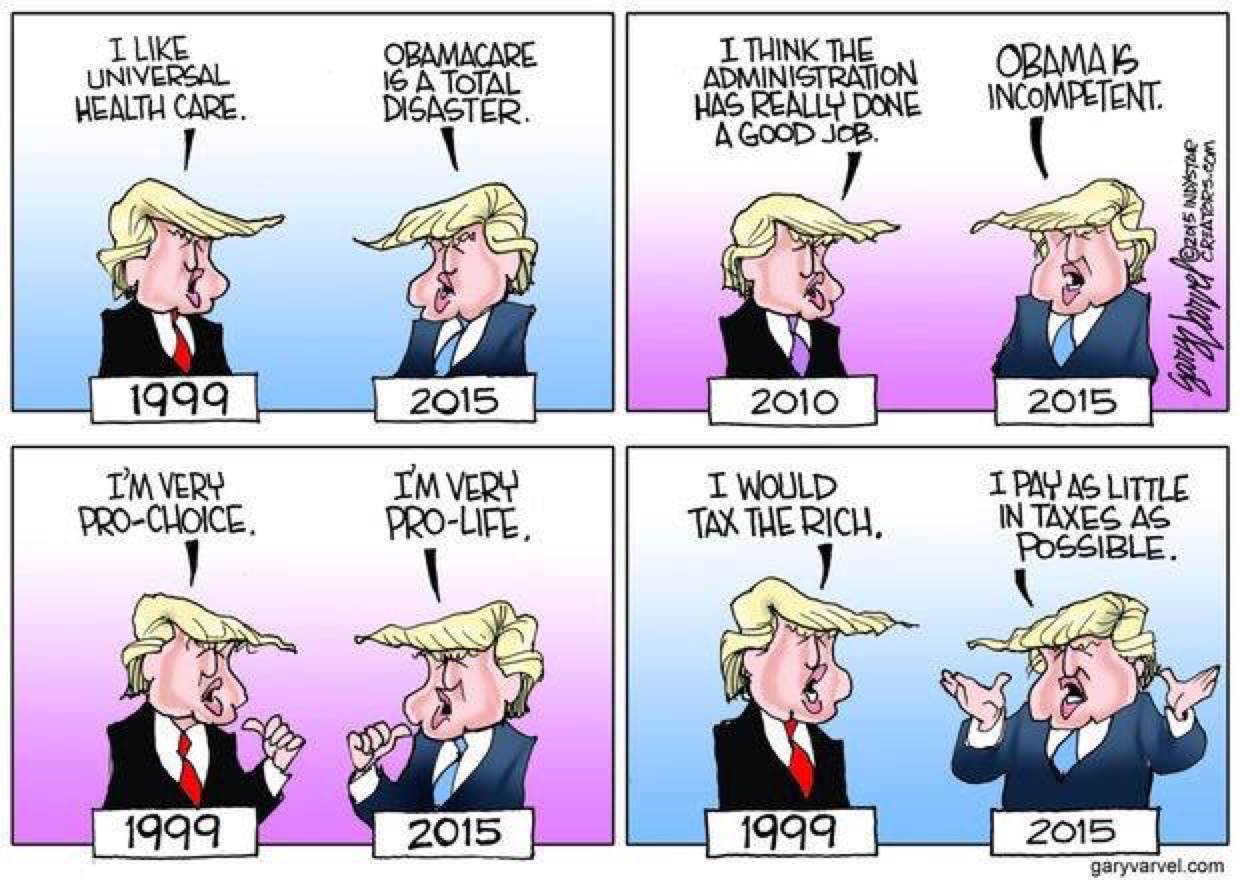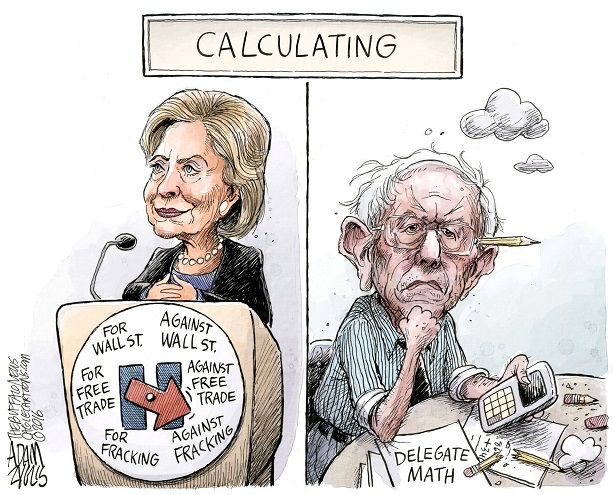I am a political junkie. I love the art and the science of politics. This past Sunday I was watching Meet the Press and decided to illustrate how marketing a candidate and product or service was not so different. Here are seven insights.
1. Understand Your Offering, Who Are You and Who You Are Not?
 One of the first things a politician does is decide what positions he or she will take on the issues and why they are uniquely qualified to solve problems on behalf of the community. This becomes the candidate’s beliefs and policy prescriptions. I liken it to determining what products and services a company is going to sell, what the customer’s wants and needs are and what uniquely qualifies your business to fulfill those desires; in other words, your company’s, division’s or department’s vision, mission and core competencies. Do you have a vision and mission statements and are they still relevant? What are your core competencies? What are you doing to strengthen and effectively monetize those competencies? Whether your journey has just begun or you have been at it for some time, it is important to have the appropriate vision and mission statements and know your core competencies.
One of the first things a politician does is decide what positions he or she will take on the issues and why they are uniquely qualified to solve problems on behalf of the community. This becomes the candidate’s beliefs and policy prescriptions. I liken it to determining what products and services a company is going to sell, what the customer’s wants and needs are and what uniquely qualifies your business to fulfill those desires; in other words, your company’s, division’s or department’s vision, mission and core competencies. Do you have a vision and mission statements and are they still relevant? What are your core competencies? What are you doing to strengthen and effectively monetize those competencies? Whether your journey has just begun or you have been at it for some time, it is important to have the appropriate vision and mission statements and know your core competencies.
2.Motivate Your Customers
 With politics this can be easy. Are you a Democrat or a Republican? With the answer to that question, you are going to gain followers of one ilk or another. If you are a Republican Candidate, Republican voters are buying what you are selling and vice versa. But is it really that simple? No, it is not. In a general sense, yes Democrats vote Democratic and Republicans vote Republican, but voters need to be inspired to vote. That is why only 58.6% of eligible voters actually vote and voting is free.
With politics this can be easy. Are you a Democrat or a Republican? With the answer to that question, you are going to gain followers of one ilk or another. If you are a Republican Candidate, Republican voters are buying what you are selling and vice versa. But is it really that simple? No, it is not. In a general sense, yes Democrats vote Democratic and Republicans vote Republican, but voters need to be inspired to vote. That is why only 58.6% of eligible voters actually vote and voting is free.
Customers also need to be inspired. It takes a lot of energy to get someone to leave their home and go to your place of business, spend time at your meeting, or try something new. It takes inspiration. In order to motivate someone into action you have to fulfill their wants and needs. This is true in politics and especially true in business. If you own a retail business, do you have the right mix of products? What products and services do your customers ask for that you currently do not carry or provide?
3. Collect as Much Data as Possible
 In 2008, it is said that Barack Obama had the most effective ground game ever. In addition, to collecting his supporter’s email, Twitter, and Facebook information, his strategists developed a composite model of voters based on an inordinate amount of voter surveys. They subsequently used that data to determine the likelihood that a voter would cast their ballot for Mr. Obama as well as support him with their acquaintances. There call centers would contact somewhere between five to ten thousand voters weekly with a short questionnaire and a thousand voters with a longer version of the survey. Their objective was to marry their information with that of voter registration rolls, consumer data warehouses and past voter databases. They then used this data to understand the issues and concerns that were important to voters
In 2008, it is said that Barack Obama had the most effective ground game ever. In addition, to collecting his supporter’s email, Twitter, and Facebook information, his strategists developed a composite model of voters based on an inordinate amount of voter surveys. They subsequently used that data to determine the likelihood that a voter would cast their ballot for Mr. Obama as well as support him with their acquaintances. There call centers would contact somewhere between five to ten thousand voters weekly with a short questionnaire and a thousand voters with a longer version of the survey. Their objective was to marry their information with that of voter registration rolls, consumer data warehouses and past voter databases. They then used this data to understand the issues and concerns that were important to voters
You may not have the time or money to develop an infrastructure like President Obama’s, but use what you do have. Collect your customer’s email addresses and zip codes if applicable. Encourage your customers to like you on Facebook and follow you on Twitter. This is an obvious data collection strategy for most businesses. Many businesses miss opportunities to collect data during customer interactions and do not build the infrastructure necessary to capitalize on that data. Maximize the capabilities of the software you currently own, such as your POS system, Excel and Access to collect as much data as possible.
4. Crunch The Data
 While collecting the data the campaign begins to analyze the data. The information is a combination of demographics, psychographics, occupation, memberships, home, auto and boat ownerships, political and charitable contributions, permits and licenses, political volunteer work and magazine subscriptions. As time goes on the campaigns begin to add more data to each voter’s profile thereby dividing voters into smaller and smaller groups.
While collecting the data the campaign begins to analyze the data. The information is a combination of demographics, psychographics, occupation, memberships, home, auto and boat ownerships, political and charitable contributions, permits and licenses, political volunteer work and magazine subscriptions. As time goes on the campaigns begin to add more data to each voter’s profile thereby dividing voters into smaller and smaller groups.
Small business owners do not have to be so concise, but it is important to see the intersections between the data points. Which zip codes do your customers live in? Where are your clients located? Do your customers have children or not? If they do have children, how old are they? Should you support the local school teams? Are your customers primarily women or men, single or married? What kind of car do they drive or magazines do they read? They may be soccer moms, white male high school graduates, Black church goers, or Latino millennials. What hobbies does each group have? Where do they congregate? Who are their influencers? These are questions that once answered are used to reach the politician’s base and potential voters.
Develop your own database and once every one or two weeks devote some time to maintaining, updating and expanding your data. Utilize this date to develop your core customer demographic (your base). Always be on the lookout for new data connections. Once you have determined who your typical customers are, you can isolate their habits and routines. These data points will aid you in developing your marketing techniques.
5. Target Your Customers
 To win a general election, a candidate must develop a message to garner support from their targeted constituencies. Their constituencies are the various clusters of voters that were created during the data crunch. With the base identified the targeting process begins. Now, the campaign can target specific voters with messages that appeal to directly to them. The candidate has many choices to make. Whether he or she will get involved with a Black Church, visit soccer games, or maybe sign up with the NRA? This is how the candidate attracts new supporters with similar attributes to their current voter base.
To win a general election, a candidate must develop a message to garner support from their targeted constituencies. Their constituencies are the various clusters of voters that were created during the data crunch. With the base identified the targeting process begins. Now, the campaign can target specific voters with messages that appeal to directly to them. The candidate has many choices to make. Whether he or she will get involved with a Black Church, visit soccer games, or maybe sign up with the NRA? This is how the candidate attracts new supporters with similar attributes to their current voter base.
These micro-targeting techniques are very effective and can be profitable for your business. If you found that the core customer demographic of your toy store mostly send their children to Montessori Schools, then how can you strengthen your relationship with those schools. Who are the types of people that send their children to Montessori? What are their values? If you know the values of Montessori parents, you can even target parents that do not send their children to a Montessori school, but have the similar values.
6. Engage Your Customers in as Many Ways as Possible
 It’s election season and in this particular election it is also silly season. Voters have received telephone calls, direct mail, and robo-calls, saw social media posts, buttons, bumper stickers, yard signs, billboards, website, television advertising, and radio advertising, if they left in a swing state. Targeted voters are probably sick and tired of being bombarded with all of the messages they receive from the campaign. But when the politician’s message effectively saturates the marketplace, their voters and potential voters will remember their slogans and catch phrases. Slogans like “Don’t Stop Thinking About Tomorrow”, “Compassionate Conservatism”, and “Yes We Can”.
It’s election season and in this particular election it is also silly season. Voters have received telephone calls, direct mail, and robo-calls, saw social media posts, buttons, bumper stickers, yard signs, billboards, website, television advertising, and radio advertising, if they left in a swing state. Targeted voters are probably sick and tired of being bombarded with all of the messages they receive from the campaign. But when the politician’s message effectively saturates the marketplace, their voters and potential voters will remember their slogans and catch phrases. Slogans like “Don’t Stop Thinking About Tomorrow”, “Compassionate Conservatism”, and “Yes We Can”.
In contrast, most small business owners do not have resources to utilize all of these methods, but pick a few methods and stick to them. The Mystery Spot is a visual illusion based tourist attraction, based in Santa Cruz, CA. The reader would be surprised how many Mystery Spot bumper stickers you see on the roads in California and many western states; they utilize bumper stickers as their primary marketing technique. Their customers are their best marketers.
Therefore, websites and social media of course are mandatory. Television can be cheaper now with offering’s like Comcast spotlight. Do not forget you can upload videos to your own personal YouTube channel. Businesses have many low-cost and no-cost opportunities in the age of the Internet. You must do your research, be effective and consistent in your efforts. Remember, it is about reach and frequency to your core customer demographic. What marketing techniques are you not using? What does your online line presence look like?
7. Cultivate Your Base to Maximize Profitability.
 The candidate’s base is his or her most ardent, passionate, and devoted supporters. These are people whose values most closely align with the candidate themselves and are most likely to volunteer for and contribute money to the campaign. Effective campaigns will reach out to their base and likely voters every couple of weeks to ensure that they still enthusiastically support the candidate. The candidate must strive to reach every person who would likely fit into their base and turn them out to vote.
The candidate’s base is his or her most ardent, passionate, and devoted supporters. These are people whose values most closely align with the candidate themselves and are most likely to volunteer for and contribute money to the campaign. Effective campaigns will reach out to their base and likely voters every couple of weeks to ensure that they still enthusiastically support the candidate. The candidate must strive to reach every person who would likely fit into their base and turn them out to vote.
Likewise, businesses must endeavor to reach everyone who fits into their core customer demographic in order to maximize profitability. A business can be very profitable with just its core customers. You never want to lose focus of your core customer demographic The key is to diligently focus on your core customers; acknowledge them, communicate with them, reward them and don’t get complacent.
In conclusion, watching politicians and their operative work can teach small business owners a few marketing techniques. Remember vote.
Share this Post

